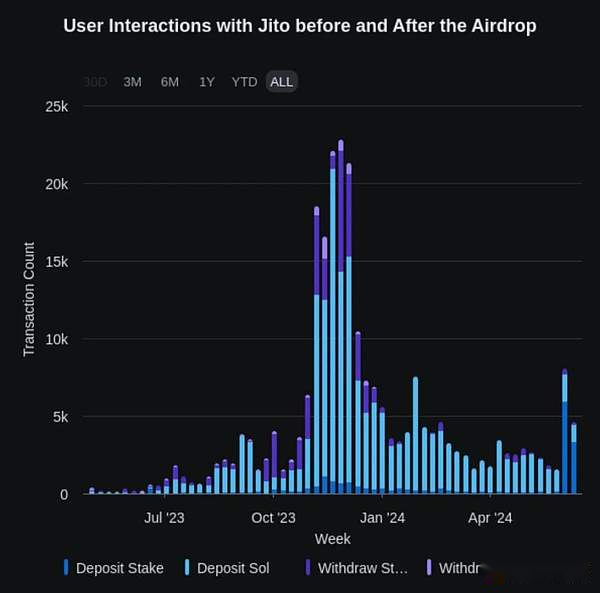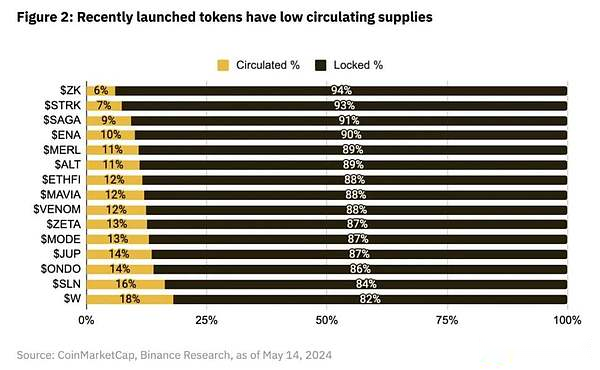
Author: Cyber K Source: X, @Baize_Research
Delphi recently released “Is airdrop a pro or a con?》 report, speaking with data, provides interesting insights.
Uniswap’s $UNI airdrop was a historic moment for Web3, and even four years later, it was the largest airdrop event ever, with a total value of $6.4 billion at its peak, and the Web3 industry has changed significantly since then.New protocols usually obtain early users and eye-catching data through Airdrop strategy, and a large number of airdrop hunters/hair users have also appeared.
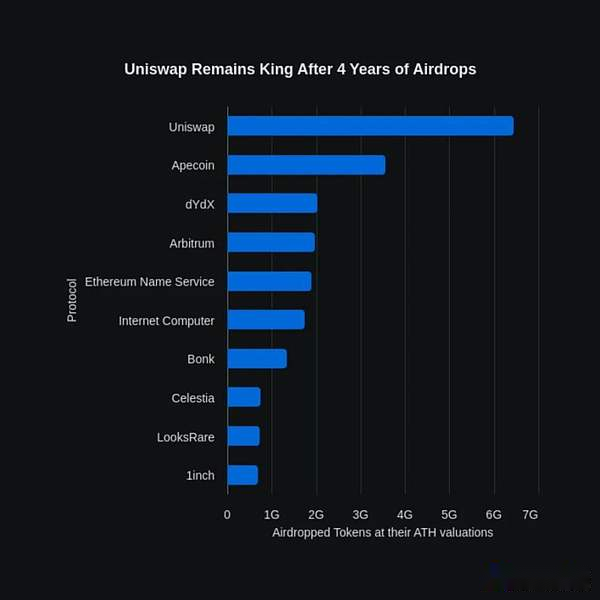
As of now, the 50 largest airdrops in Web3 have allocated over $26.6 billion in total value, and this “free money-making” opportunity has not been overlooked.Now, every quality project will attract a large number of hair-fighting users after it is released, eager to trade the lowest possible cost (time, attention, and gas) for initial airdrop tokens.
Therefore, the new agreements have set new airdrop standards and anti-witch measures:
The earliest one isFixed reward system (Uniswap)
Then it appearedGraded Airdrop (Jito)
Optimism has createdMultiple airdrop standards
Now, the new agreements preferPoints System
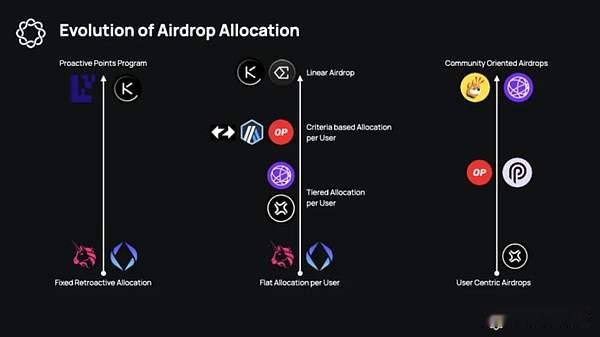
However, for many agreements popular with the slaughter party, the main problem with airdrops is the bubble effect:
Once the snapshot is over, the usage metrics will drop sharply.
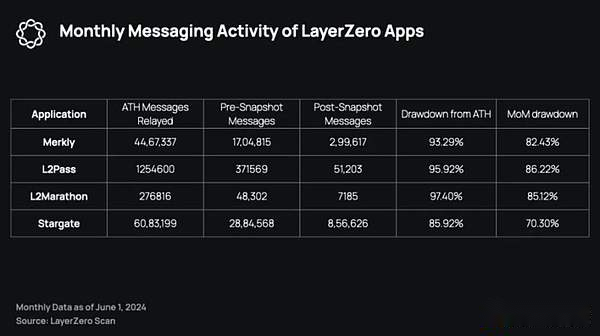
Let’s take the popular project Layerzero as an example
Since April, @StargateFinance’s cross-chain transaction volume has dropped sharply from $1.67 billion to $406.7 million, a decrease of about 75%.I personally don’t interact specifically for airdrops, but just for cross-chain use, so the airdrop is very natural – about $400.L0 is not an exception, this phenomenon is very common.
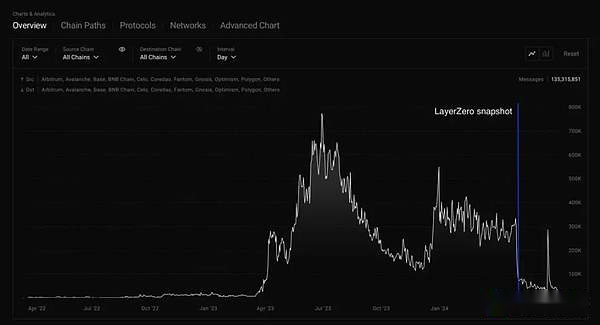
Before $ZK airdrop, @zksync’s Daily Fees were almost comparable to Arbitrum, however, daily fees have been falling since the official release of snapshots and TGE.Recently, this figure fell below $10,000 for the first time.

There are also Kamino, Parcl, Manta, Jito, all cases show a similar pattern: after snapshots, on-chain activity experiences a significant decline.From another perspective, the biggest problem with airdrop in the subsequent development of the project is that it will affect users and investors’ evaluation of the agreement and investment decisions.
The following points may be helpful:
• See if DAU and MAU metrics have seen a significant decline after the agreement announced an airdrop snapshot
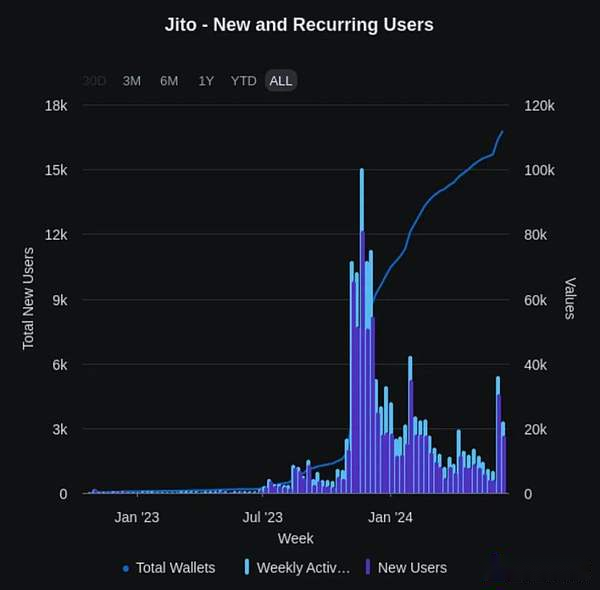
• Measure how many users continue to use the protocol within a predetermined time period after airdrop (e.g. 1 week or 1 month)
• Measure the proportion of new and old users in DAU or WAU
• Monitor the number of transactions per user
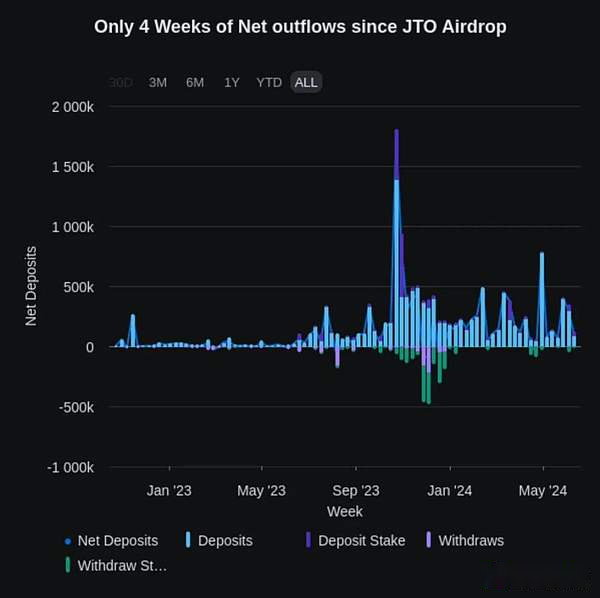
• What functions of the monitoring protocol are being used extensively and frequently.When a protocol is airdropped, if the core functions are still being used continuously, it indicates that the protocol has a high market compatibility.
• Track wallet engagement metrics
• Monitor community discussions and governance activities
